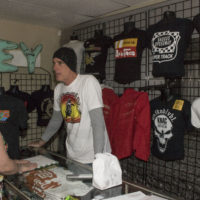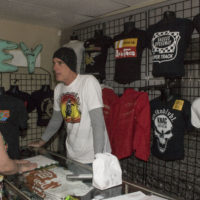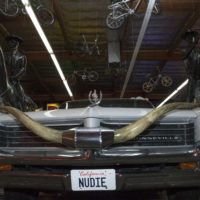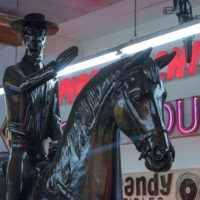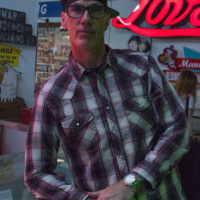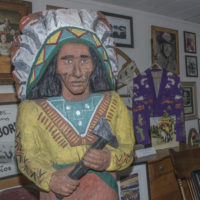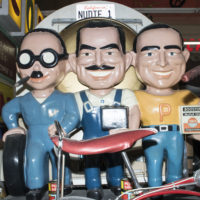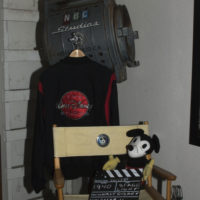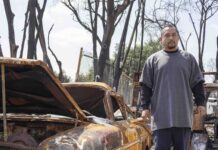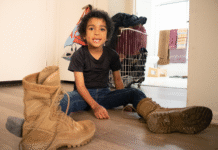When entering the Valley Relics Museum, the love for Los Angeles is immediately apparent. Racks of t-shirts line the walls proudly displaying the defunct logos of family-owned companies from the San Fernando Valley’s past. The glass counter is stocked with small pieces of memorabilia and merchandise, including coffee mugs, tote bags and bumper stickers stating, “History is Beautiful.”
The museum began as the personal collection of the owner, Tommy Gelinas, who began collecting matchbooks, postcards, yearbooks and history books in an effort to preserve the fading history of his hometown.
“Growing up as a kid in the San Fernando Valley, there were so many wonderful things to experience, and as I got older, I found myself explaining to newcomers what we used to have,” Gelinas says. “And the more I found myself explaining, the more I asked myself, where did it all go?”
Gelinas started sharing his collection online and began to garner an interest from valley locals, who would ask to see his artifacts in person.
“I started posting on early social media such as LiveJournal, Myspace and eventually Facebook,” Gelinas says. “It started to fuel the curiosity of a lot of people who didn’t know the history of the Valley. It really started to fuel the idea of opening a museum.”
The Chatsworth Museum opened its doors in July of 2013. Beginning with Gelinas’ collection of 5,000 objects. The museum now holds about 15,000 artifacts including memorabilia, books, statues, automobiles, neon signs and other odd pieces of history. The staff at Valley Relics is constantly on the lookout for new additions.
“It’s exciting when we find a piece of history that has been somewhat lost. Researching it is like going on an adventure every time. It’s a hobby, it’s a passion,” museum staff member and researcher Mary Neubauer says.
After a larger object is found, Gelinas and a member of the museum staff will rescue the artifact, which is usually a sign or statue.
“A lot of it is like a treasure hunt. We are constantly keeping our eyes and ears open, whether it’s on eBay, a yard sale or a thrift store,” Gelinas says. “But due to the progression and popularity of the museum, a lot of the artifacts fall on our lap.”
Valley Relics is often asked to lodge big display pieces that are in between placement, such as the Television Academy’s towering Emmy statues, or more recently, the housing of the Porter Ranch cowboy statues.
The museum receives many old neon signs, photos and materials from local defunct businesses. The neon signs have been restored to working condition, but have kept the grime and rust they had when they were proudly displayed on their respective establishments.
“When people think of restoring they think of repainting and all that. No, what we want to do is keep the nostalgic feeling of the color and all the paint chipping away, but fix the neon and get them lit back up,” museum staff member and electrician Shane Stewart says. “But leave it exactly the way it is, because that’s when it has more heart behind it. If you go and paint it, then it’s not original.”
The museum is funded mainly by donations and t-shirt sales, which was made possible by Gelinas’ garment decorating business, the Print Lab, which he founded in 1995.
“I needed to find a way to create some type of revenue stream to help keep the doors of the museum open,” Gelinas says. “So I was researching a lot of these local companies to see if there was any trademarks, or find the owners. I come to find out, a lot of these companies have been closed for 25 years, 30 years. There was never a trademark.”
Many of the owners are pleased to see their family businesses revived in some way and donate more of their personal remembrances to the museum.
“They’re happy that we’re keeping their family’s legacies alive,” Gelinas said. “Even though there’s no trademark, we have their blessing.”
Gelinas says the museum isn’t just for valley locals. The sheer amount of manufacturing and production the San Fernando Valley has achieved has had an impact on shaping the nation as a whole.
“It’s a mecca of history, but it’s really hard to prove because most of that history is gone,” Gelinas says. “The valley deserves a museum, it deserves a spotlight on its history.”

